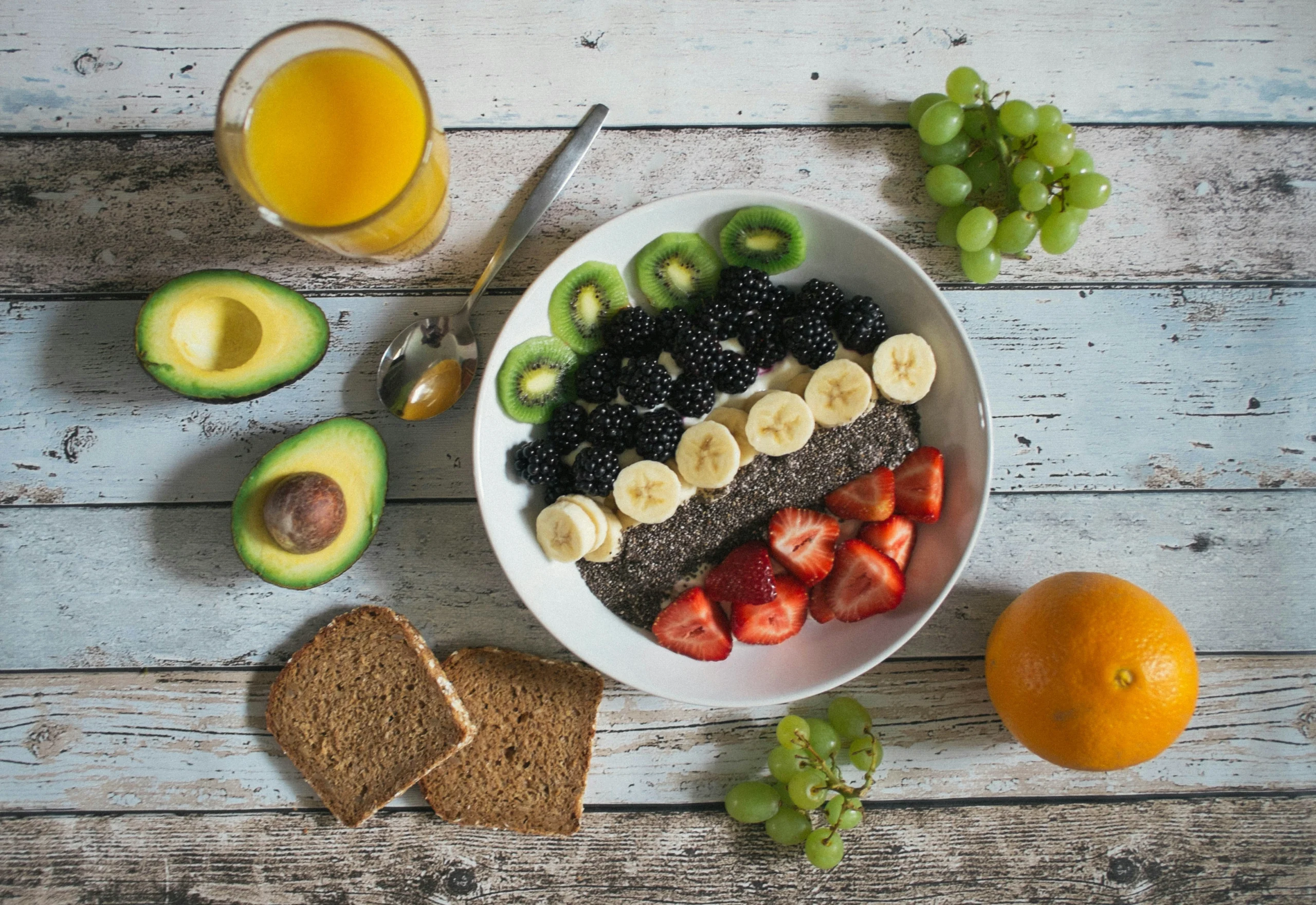Top 8 Superfoods You Should Add to Your Diet Today
Yes, we are all aware that maintaining good health requires eating a balanced diet. In terms of health advantages, however, not all foods are created equal. Certain foods are superior than others in terms of nutritional value. Listed in no particular sequence, these are some of the more intriguing—and often little-known—foods that are high in nutrients.
- chia seeds
Infact, we are referring about the same chia seed that was utilized in the popular Chia Pets of the 1980s. ( “Ch-Ch-Ch-Chia!” ) However, health-conscious people now see chia seeds for what they are: a great source of omega-3 fatty acids, along with good amounts of protein, fiber, calcium, and magnesium, rather than spreading them on terra-cotta surfaces, watering them, and watching them sprout into all kinds of green and fuzzy pets (and people). Additionally, it is devoid of gluten. Chia seeds are easily digested in their whole and may be added to food or combined with liquids to make puddings or gels.
- Kale
For a time now, kale has been the favorite among those who are concerned about their health. This green vegetable, which comes from the mustard family’s cabbage, comes in a variety of antioxidant-rich varieties. Alpha-linolenic acid, an omega-3 fatty acid, protein, fiber, calcium, and vitamins A, C, and K are all found in kale. According to studies, eating kale can help prevent heart disease, cancer, cataracts, and macular degeneration, among other health issues. Although kale is frequently sautéed or boiled, it can also be roasted till crisp or eaten raw in salads.
- Quinoa
The delicious seed of the same-named plant, quinoa, has been a mainstay crop in South America for thousands of years. In addition to being a good source of iron, magnesium, phosphorus, potassium, calcium, zinc, copper, vitamin E, and several antioxidants, the tiny seeds are high in fiber and oil and contain all nine essential amino acids, making quinoa one of the few plant sources for complete protein. It is devoid of gluten as well. Like rice, quinoa is frequently cooked and used in both savory and sweet recipes. It may also be processed into flour to strengthen baked items.
- Walnuts
Alpha-linolenic acid, an omega-3 fatty acid, is abundant in walnuts. Additionally, they are a good supplier of phosphorus, magnesium, and copper. Walnuts have been demonstrated in research to enhance cardiovascular health and reduce cholesterol. Walnuts can be eaten raw or combined with baked products, salads, stir-fries, and other recipes.
- Blueberries
Blueberries: Vacciniumcorymbosum, the highbush blueberry’s real berry cluster. This little berry is a great source of iron, manganese, vitamin C, vitamin K, dietary fiber, and many antioxidants, including anthocyanin. According to studies, eating blueberries may offer several advantages, including lowering the chance of a heart attack, preventing cancer, and preventing cognitive decline. These mouthwatering berries are frequently consumed raw, cooked for dessert, or combined with smoothies.
- Tart cherries
Antioxidants abound in tart cherries. More anthocyanins, a kind of antioxidant, are found in a serving of this little fruit, its juice, or its concentrate than in servings of the majority of other fruits and vegetables. Additionally, tart cherries have anti-inflammatory qualities. According to several studies, eating tart cherries, tart cherry juice, or tart cherry juice concentrate can improve our health in a number of ways, such as by lowering joint inflammation, promoting better sleep, lowering the risk of diabetes and stroke, and helping with weight management.
- Seeds of hemp
The little hemp seed is undoubtedly a nutritional powerhouse. This little seed is high in calcium, iron, magnesium, potassium, vitamin E, and other vitamins and minerals. It also has a considerable quantity of fiber and protein. In addition to being a strong supply of important fatty acids like omega-3 and omega-6, hemp seeds also contain all of the necessary amino acids. You may eat hemp seeds by adding them to recipes when baking and cooking, combining them into smoothies, and sprinkling them over a range of dishes.
- Teff
Long a mainstay in some regions of eastern Africa, this tiny grain—possibly the smallest in the world—is becoming more well-known around the world due to its remarkable nutritional content and adaptability. Numerous vitamins and minerals, including as calcium, iron, magnesium, zinc, and vitamin C, are abundant in it. It is also devoid of gluten and rich in fiber and protein. Teff may be consumed whole in a number of ways or processed and used as flour.
FAQ:
- What makes these foods ‘superfoods’?
Superfoods are nutrient-dense foods that offer high levels of vitamins, minerals, antioxidants, healthy fats, or fiber. They provide health benefits beyond basic nutrition, making them powerful additions to a balanced diet.
- Why are chia seeds considered a superfood?
Chia seeds are rich in omega-3 fatty acids, protein, fiber, calcium, and magnesium. They are gluten-free and easy to digest. You can add them to smoothies, yogurt, salads, or even make chia pudding.
- What are the health benefits of kale?
Kale contains antioxidants, omega-3 fatty acids, fiber, calcium, and vitamins A, C, and K. Studies suggest it may help reduce risks of heart disease, cancer, cataracts, and macular degeneration. It can be eaten raw, sautéed, boiled, or baked into chips.
- Why is quinoa considered a complete protein?
Quinoa contains all nine essential amino acids, making it a rare complete plant protein. It also provides iron, magnesium, phosphorus, potassium, zinc, copper, vitamin E, and antioxidants. It’s gluten-free and can replace rice in many dishes.
- How are walnuts beneficial for health?
Walnuts are packed with alpha-linolenic acid (ALA), a type of omega-3 fatty acid. They also supply phosphorus, magnesium, and copper. Research shows walnuts can improve heart health and lower cholesterol.
- Why are blueberries called a “superfruit”?
Blueberries are rich in vitamin C, vitamin K, manganese, fiber, and powerful antioxidants like anthocyanins. Studies show that blueberries may help reduce the risk of heart attack, cancer, and cognitive decline.
- What makes tart cherries so nutritious?
Tart cherries are loaded with anthocyanins and have strong anti-inflammatory properties. Consuming tart cherries or their juice may help with better sleep, reduced joint inflammation, improved heart health, and weight management.
- Why are hemp seeds considered a nutritional powerhouse?
Hemp seeds provide omega-3 and omega-6 fatty acids, protein, fiber, calcium, iron, magnesium, potassium, vitamin E**, and all essential amino acids. They can be added to smoothies, baked goods, salads, or sprinkled over meals.
- What makes teff a rising superfood?
Teff is rich in fiber, protein, calcium, iron, magnesium, zinc, and vitamin C. It’s naturally gluten-free and can be eaten whole or used as flour in breads and porridges. Its versatility and nutrition make it increasingly popular.
- Do I need to eat all these superfoods daily?
Not necessarily. Adding even a few of these nutrient-rich foods to your weekly diet can significantly boost your overall health. Variety is key to a balanced and nutritious diet.
Click Here: How Much Water Do Humans Need Daily? A Clear Answer for All Ages












Leave a Reply